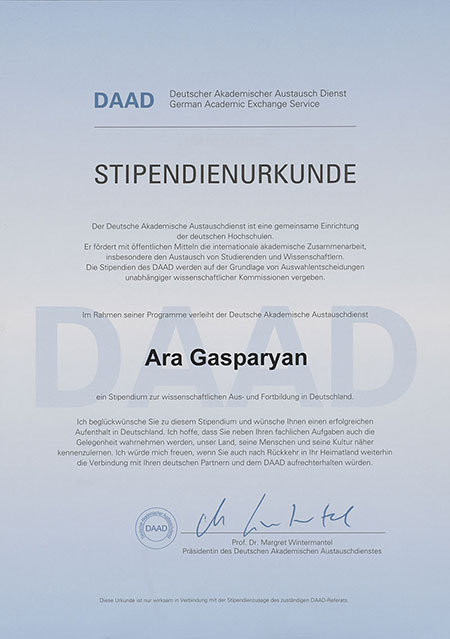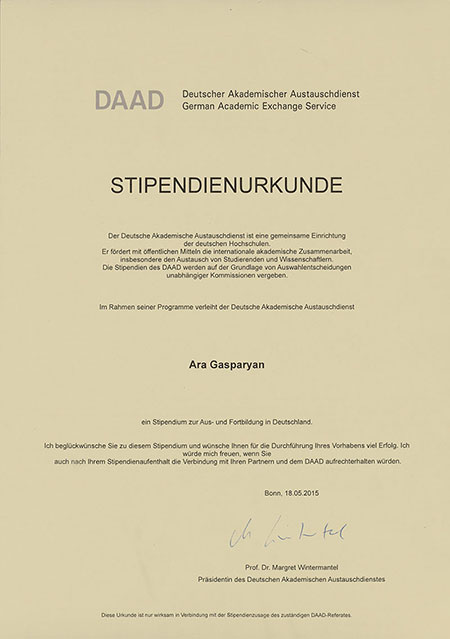Covariograms and probabilistic characteristics of convex bodies
Research Proposal
Reconstruction of the body over its cross sections is one of the main tasks of geometric tomography, a term introduced by R. Gardner in [1]. Tomography is mainly engaged in the description of the subclasses of cross sections of a body which can reconstruct the body. However, calculation of the geometrical characteristics of the cross sections is often a difficult task. Reconstruction of convex bodies using random sections makes it possible to simplify the calculation, since one can use the technics of mathematical statistics in order to estimate geometrical characteristics of random sections. Quantities characterizing random sections of the body D (such as chord length distribution, orientation dependent chord length distribution, Orientation-dependent distribution of the length of a random segment and others) carry some information on D and if there is a connection between geometrical characteristics of D and probabilistic characteristics of random cross sections, then by a sample of results of experiments one can estimate the geometric characteristics of the body D (see [2]).
The question of the existence of a bijection between bounded convex bodies and chord length distribution functions of these bodies was made by German mathematician Wilhelm Blaschke (see [3]). This question has received a negative answer (see [4]), however it is shown that the triangles and quadrilaterals can be reconstructed from the chord length distribution (see [5]). Similarly, a hypothesis about existence of one-to-one correspondence between orientation dependent chord length distributions and bounded convex bodies can be considered.
French mathematician Matheron (see [6]) defines the notion of a covariogram, an important function describing the volume of the intersection of body D with its translates, and formulated a hypothesis that there is a bijection between covariogram and bounded convex bodies. Moreover, he establishes a connection between covariogram and orientation dependent chord length distribution function, which allows to formulate Matheron’s hypothesis by the following way: Is there a bijection between orientation dependent chord length distribution functions and bounded convex bodies? In the plane, a positive answer to the Matheron’s hypothesis in the class of convex polygons received Nagel (see [7]). Matheron’s hypothesis received a positive solution in the case of planar convex bounded domains (see [8]-[10]). Note that in [7]-[10] the authors prove the existence and uniqueness of body D, but do not construct the corresponding unique D.
It is important the work of Yerevan group of mathematicians, that gives explicit expressions for covariogram and orientation dependent chord length distribution function for a wide class of convex bodies as in the plane as in 3-dimensional space (see [11]-[19]). A practical application in crystallography of these results can be found in [20].
Even in the planar case, it is impossible to obtain estimates for orientation dependent chord length distribution function in all directions, and hence the natural question arises: whether it is possible to reconstruct the body having values of orientation dependent chord length distribution function only for a finite set of directions. This question received negative answer, because it is possible to construct two non congruent triangles that have the same chord length distribution function for a fixed set of m directions, where m is a natural (see [15]).
The first scientific goal of the research is to find subclasses of convex bodies, where it is possible to reconstruct a body from the values of orientation dependent chord length distribution function or covariogram for a finite set of directions.
The second scientific goal of the research is to investigate covariogram of D by random segment L(ω), intersecting D and has both a fixed length and direction. It is obtained in [21] a connection between covariogram and orientation dependent distribution function of the length of the random segment L(ω).
REFERENCES
- R. J. Gardner, Geometric Tomography (Cambridge University Press, Cambridge, UK, 2nd ed., 2006).
- G. Bianchi, R. J. Gardner and M. Kiderlen, “Phase retrieval for characteristic functions of convex bodies and reconstruction from covariograms”, Journal of the American Mathematical Society, vol. 24, pp. 293-343, 2011.
- L. A. Santalo, Integral geometry and geometric probability (Addision-Wesley, Reading, MA, 2004).
- C. Mallows and J. Clark, “Linear-intercept distributions do not characterize plane sets’’, J. Appl. Prob., vol. 7, pp. 240-244, 1970 (Correction vol. 6, pp. 208-209, 1971).
- J. Gates, “Recognition of triangles and quadrilaterals by chord length distribution’’, J. Appl. Prob., vol. 19, pp. 873-879, 1982.
- G. Matheron, Random Sets and Integral Geometry (Wiley, New York 1975).
- W. Nagel, “Orientation-dependent chord lengths distributions characterize convex polygons”, Jour. Appl. Prob., vol. 30, pp. 730-736, 1993.
- G. Bianchi, “Matheron’s conjecture for the covariogram problem’’, J. London Math. Soc., (2) vol. 71, no. 1, pp. 203-220, 2005.
- G. Bianchi and G. Averkov, “Confirmation of Matheron’s Conjecture on the covariogram of a planar convex body”, Journal of the European Mathematical Society 11, pp. 1187-1202, 2009.
- G. Averkov and G. Bianchi, “Retrieving convex bodies from restricted covariogram functions’’, Adv. Appl. Prob., (SGSA), vol. 39, pp. 613-629, 2007.
- H. S. Harutyunyan and V. K. Ohanyan, “Chord length distribution function for regular polygons”, Advances in Applied Probability (SGSA), vol. 41, no. 2, pp. 358-366, 2009.
- H. S. Harutyunyan, “Chord length distribution function for a regular hexagon’’, Proceedings of Yerevan State University, vol. 1, pp. 17 – 24, 2007.
- N. G. Aharonyan and V. K. Ohanyan, “Chord length distributions for polygons”, Journal of Contemporary Math.Anal.(Armenian Academy of Sciences), vol. 40, no. 4, pp. 43 – 56, 2005.
- N. G. Aharonyan, “Generalized Pleijel identity’’, Journal of Contemporary Mathematical Analysis (Armenian Academy of Sciences), vol. 43, no. 5, pp. 3 – 14, 2008.
- A. G. Gasparyan and V. K. Ohanyan, “Recognition of triangles by covariogram’’, Journal of Contemporary Mathematical Analysis (Armenian Academy of sciences), vol. 48, no. 3, pp. 110-122, 2013.
- V. K. Ohanyan and N. G. Aharonyan, “Tomography of bounded convex domains”, SUTRA: International Journal of Mathematical Science, vol. 2, no. 1, pp. 1-12, 2009.
- H. S. Harutyunyan and V. K. Ohanyan, “Orientation-dependent section distributions for convex bodies’’, Journal of Contemporary Mathematical Analysis (Armenian Academy of sciences), vol. 49, no. 3, pp. 139-156, 2014.
- A. G. Gasparyan and V. K. Ohanyan, “Covariogram of a parallelogram’’, Journal of Contemporary Mathematical Analysis (Armenian Academy of sciences), vol. 49, no. 4, pp. 17-34, 2014.
- H. S. Harutyunyan and V. K. Ohanyan, “Covariogram of a cylinder’’, Journal of Contemporary Mathematical Analysis (Armenian Academy of sciences), vol. 49, no. 6, 2014.
- W. Gille, N. Aharonyan and H. Harutyunyan, “Chord length distribution of pentagonal and hexagonal rods: relation to small-angle scattering’’, Journal of Appl. Crystallography, vol. 42, pp. 326- 328, 2009.
- A. G. Gasparyan, “Random segment and covariogram”, Abstracts, Armenian Mathematical Union Annual Session 2014, pp. 16-17.
Description
I did my research in Friedrich Schiller University of Jena from October 2015 to February 2016. During this period I have participated in the seminar of PD Dr. Werner Nagel, who is a specialist of stochastic geometry, stereology and geometric statistics at Friedrich Schiller University of Jena, and have discussed with him scientific goals of the project as well as the concepts of random and homogeneous STIT tessellations. Some ideas of shape metrics were reviewed as well.
During the research period I took courses of Commutative algebra, Bioinformatics and German language as well as participated in the seminar Systems Biology of Immunology.

